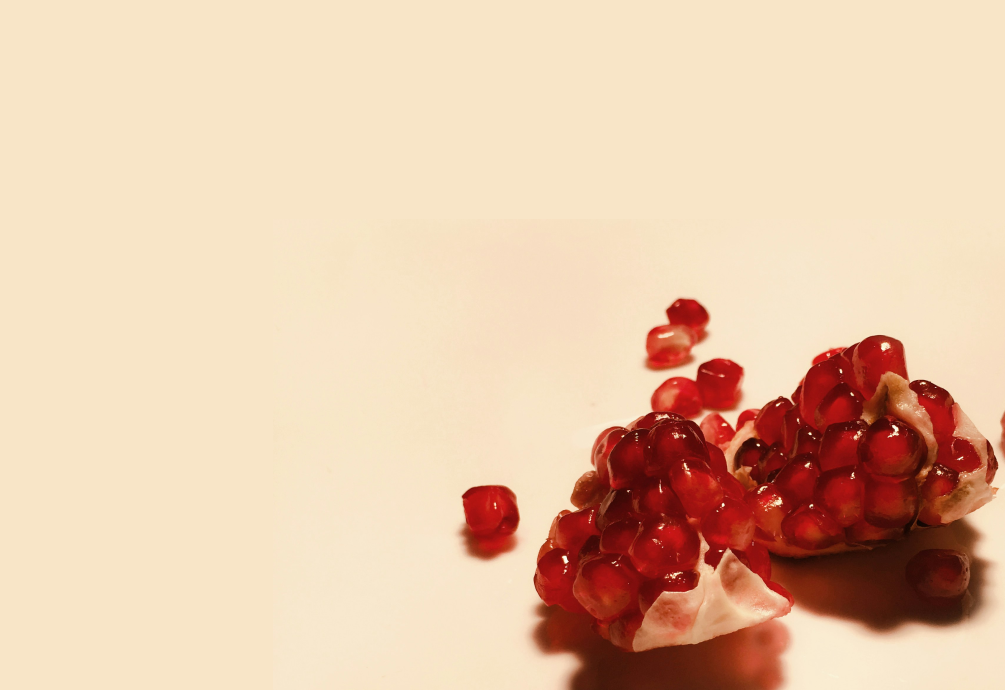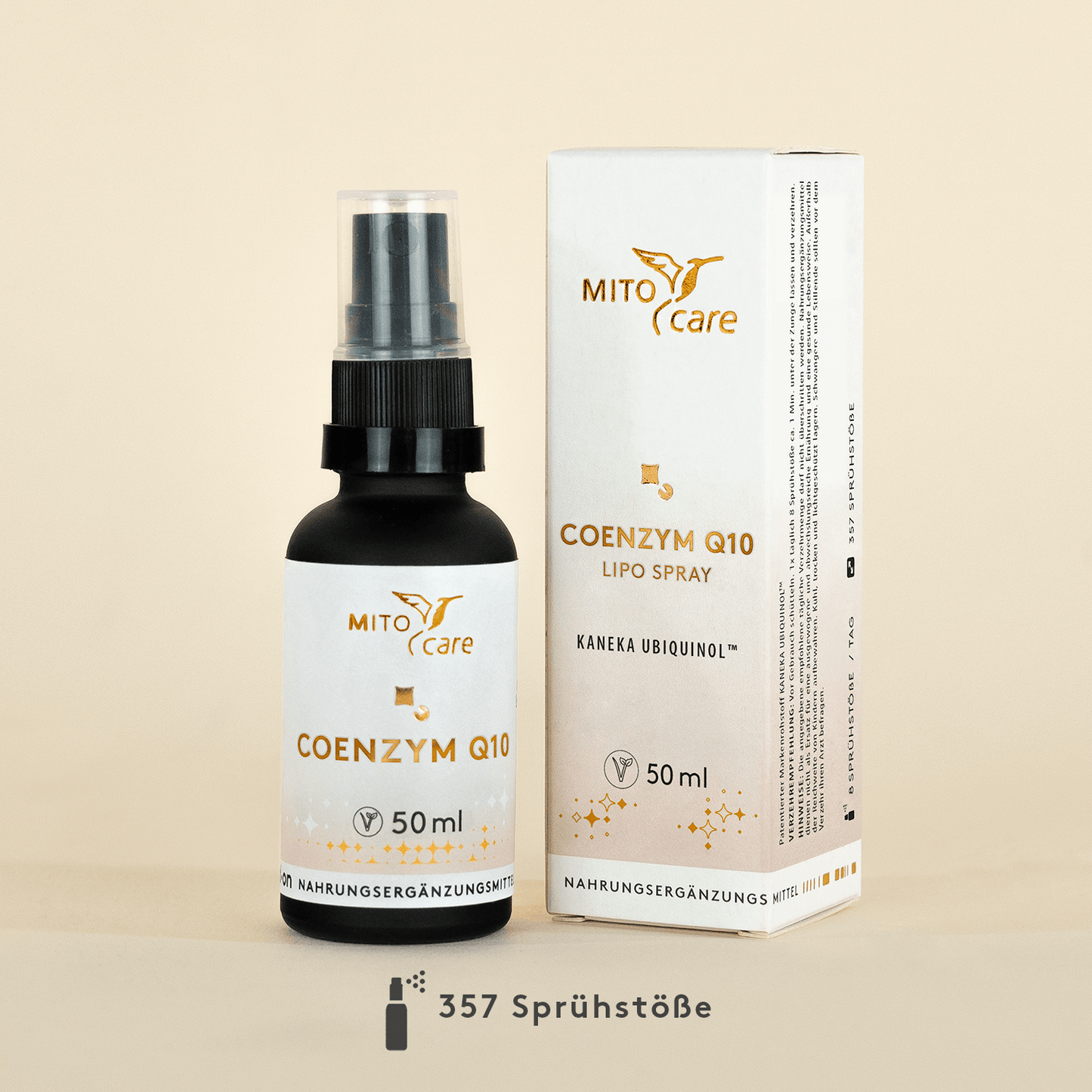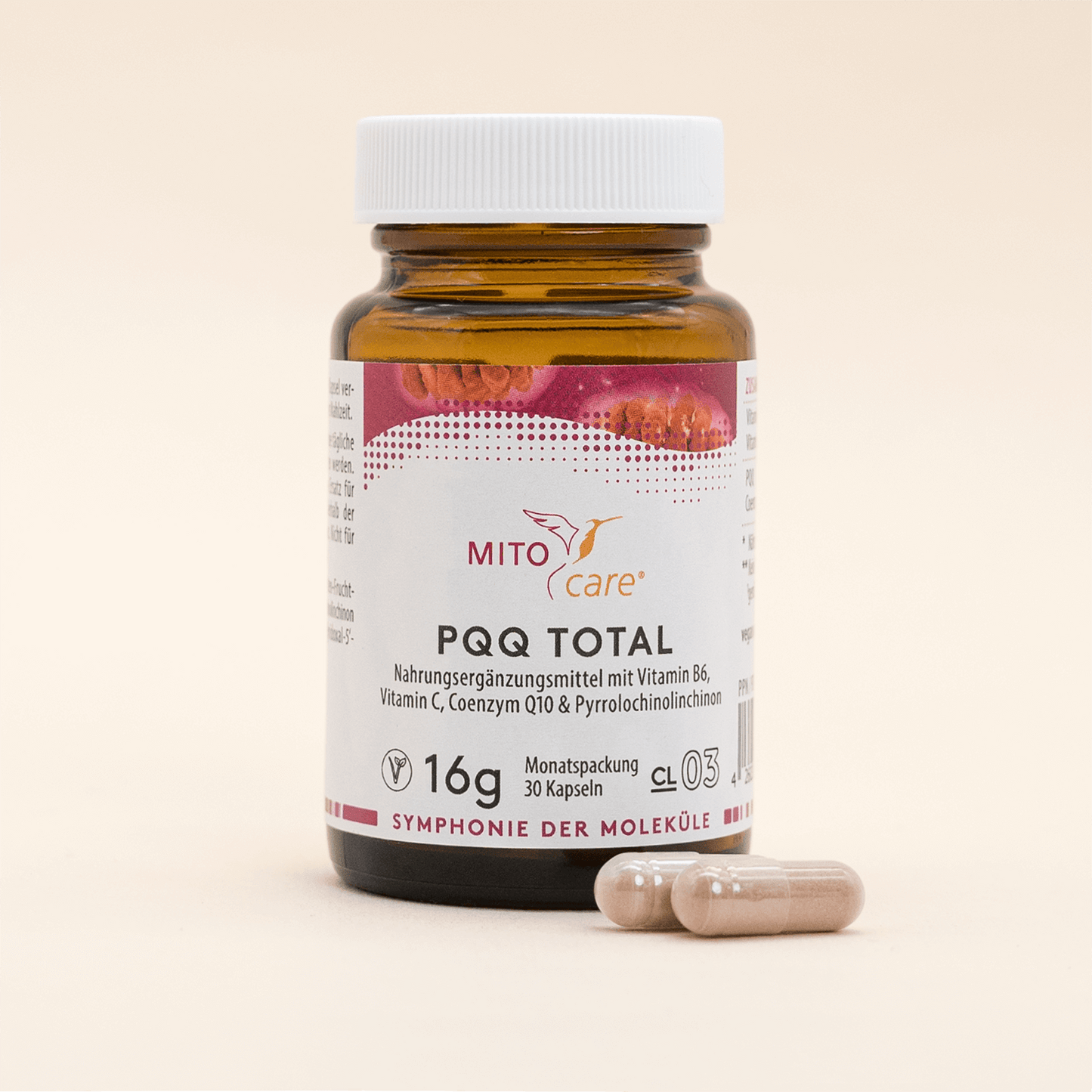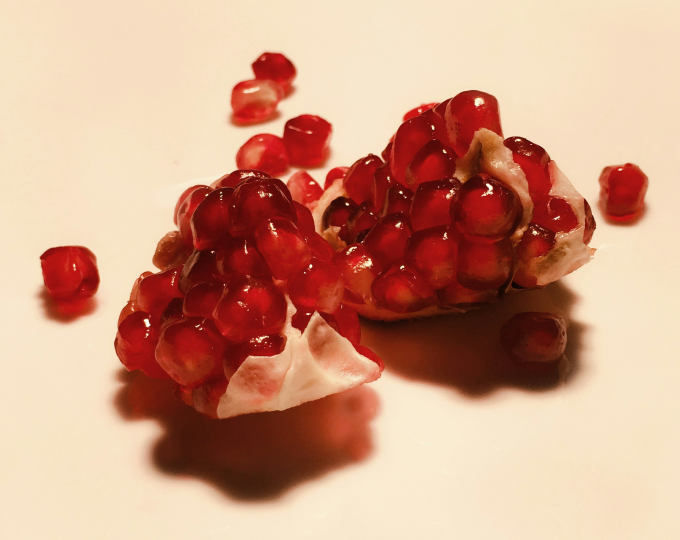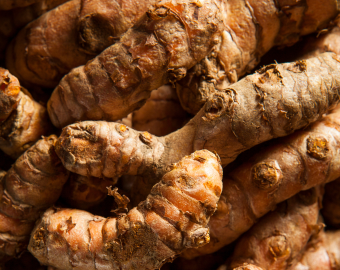Themen dieses Blogartikels:
Table of contents
- Definition: What is PQQ?
- What is a coenzyme
- PQQ Effect: What does the coenzyme do for your body?
- What is the respiratory chain
- Which foods contain PQQ?
- What is coenzyme Q10?
- Function: What effect does coenzyme Q10 have on your well-being?
- Q10 deficiency: How you can fix it
- Where else does coenzyme Q10 occur?
- PQQ & Coenzyme Q10: A Perfect Pair
- Sources & Bibliography
Definition: What is PQQ?
PQQ (pyrroloquinoline quinone) is a vitamin-like substance that was discovered in 1979. Since the body cannot produce PQQ itself, it is believed that it may be a new vitamin. At the beginning of the 21st century, it was recognized as part of the vitamin B family.¹
Today, the substance is considered a cofactor in metabolism . PQQ is involved in important reactions, especially in the mitochondria. PQQ is also a so-called coenzyme in the body.
What is a coenzyme?
The term coenzyme means that the body uses this substance for a metabolic reaction and consumes it in the process. The reaction cannot take place without the coenzyme. It is part of an enzyme and an important aid for processes within the organism.
But what exactly do we know about PQQ and what justifies its possible classification as a vitamin?
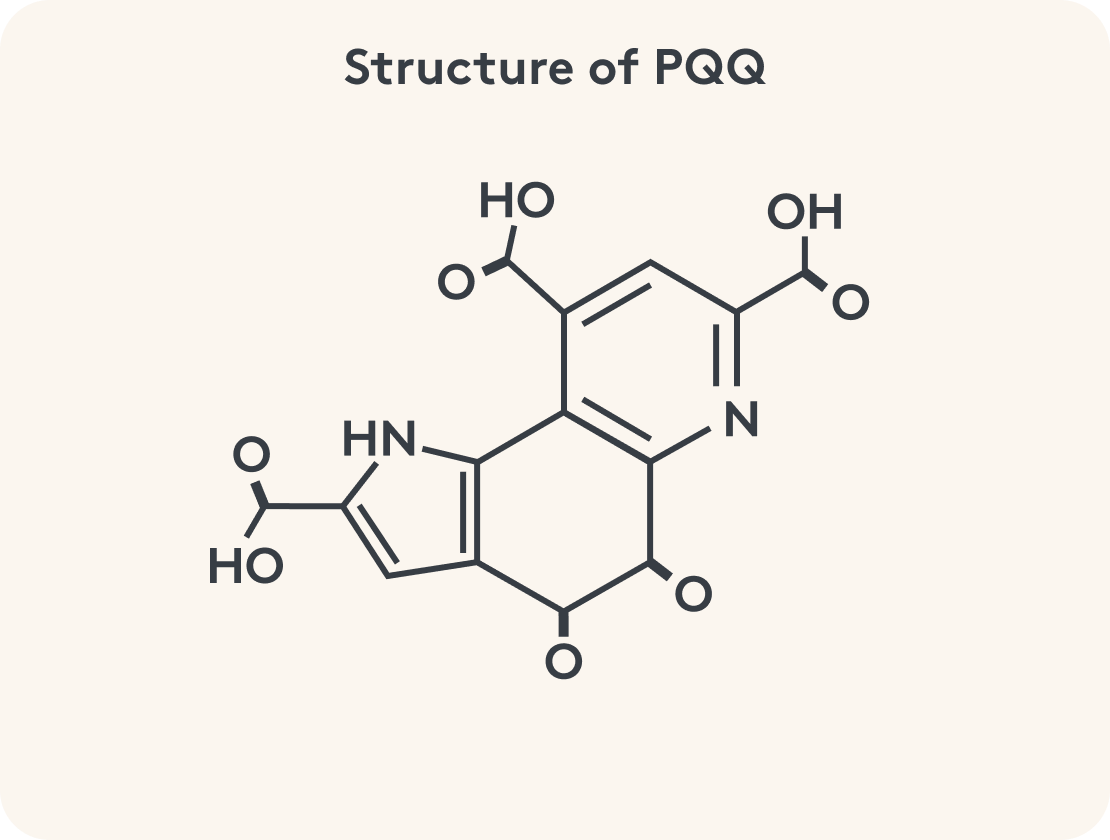

PQQ Effect: What does the coenzyme do for your body?
There are already more than 1,100 entries about PQQ on Pubmed, one of the largest research platforms for medicine. Popular search entries include “PQQ and mitochondria” and “PQQ and inflammation”.
To help you get an idea of the PQQ effect, we have put together some of the most important features for you - including the sources so that you can read the facts yourself at your leisure:
- Strengthen mitochondria : PQQ can ensure that mitochondria grow in the body's cells and thus support energy production²
- Relieve inflammation: PQQ can promote the production of anti-inflammatory messengers and thus contribute to inflammation regulation²
- Support respiratory chain: PQQ plays a role in energy metabolism
- Aging better: PQQ can alleviate oxidative stress and thus possibly accompany the aging process³
- Provide energy: PQQ can renew coenzyme Q10 so that it can continue to function in energy production⁴
What is the respiratory chain?
The respiratory chain is a process within the mitochondria in which a large amount of energy can be produced. Energy production works as follows: electrons are transported from molecule to molecule and through various processes so much energy is ultimately available that the body has enough material to produce the universal energy carrier ATP.
Which foods contain PQQ?
Infants receive their daily dose of PQQ from breast milk . Later, food must be sufficient as a source of PQQ. Foods that contain relatively high levels of the substance include:
- fermented soybeans
- green tea
- spinach
- bean
- scabbage
- kiwi
- papaya⁴
PQQ is therefore mainly found in plants and less in animal products. The infographic shows you in what quantities PQQ is found in which foods.
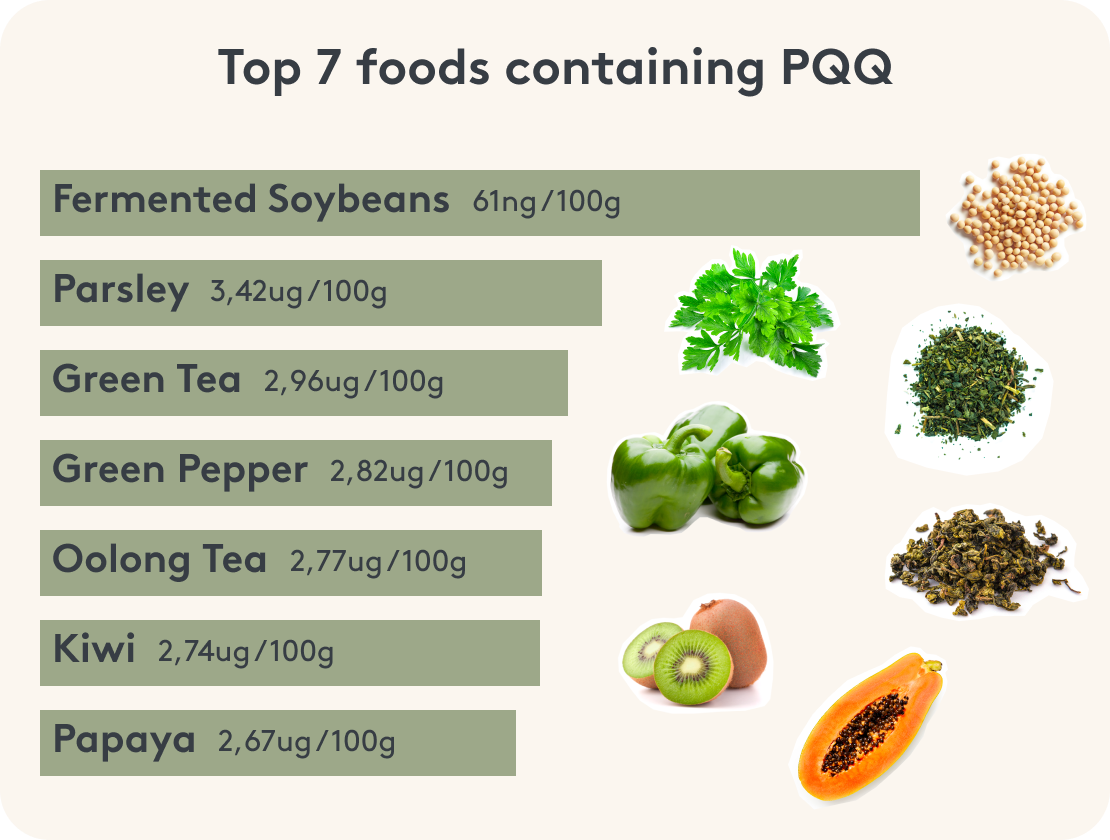

What is coenzyme Q10?
Coenzyme Q10, also known as ubiquinone-10 or ubiquinol, is structurally related to vitamin K. But even if the term vitamin Q10 is used here and there, unlike PQQ, it is not a vitamin. Only substances that the body cannot produce itself are referred to as vitamins. Coenzyme Q10, on the other hand, is a substance produced by the body itself. It is produced using the same metabolism that produces cholesterol.
This may be of interest to biochemistry fans: Q10 is a quinone derivative with an isoprene side chain with a length of 10 units.
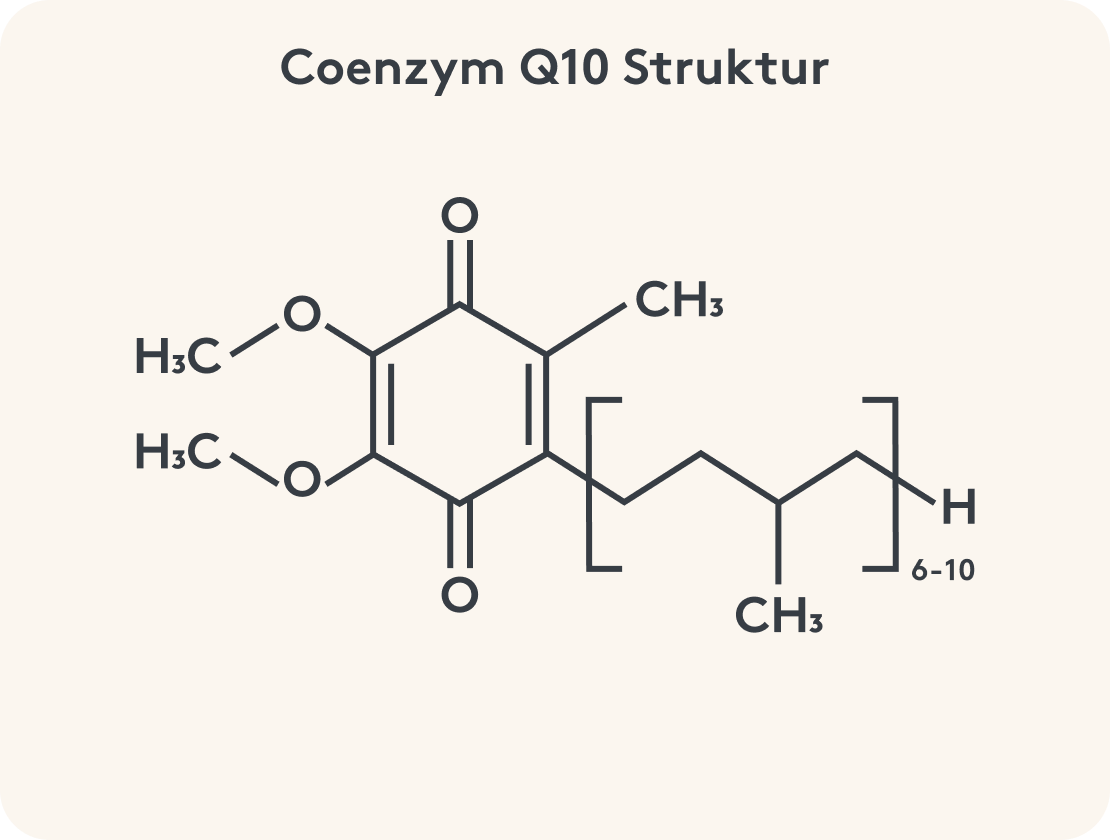

Function: What effect does coenzyme Q10 have on your well-being?
Q10 is found within cells mainly in the mitochondria. More precisely, the substance is located on the inner mitochondrial membrane. Like many other coenzymes, ubiquinol is involved in the respiratory chain and acts as an electron carrier.
Without coenzyme Q10, the mitochondria would not be able to do their job and the energy production taking place there could come to a standstill. This is because Q10 is at the beginning of the electron transfer chain. If there are problems at this point, things cannot continue and the body cannot produce enough energy.
Just like PQQ, the coenzyme is an important helper for your mitochondria, so that they can produce energy and give you power for your tasks. A coenzyme Q10 deficiency would have physical consequences.
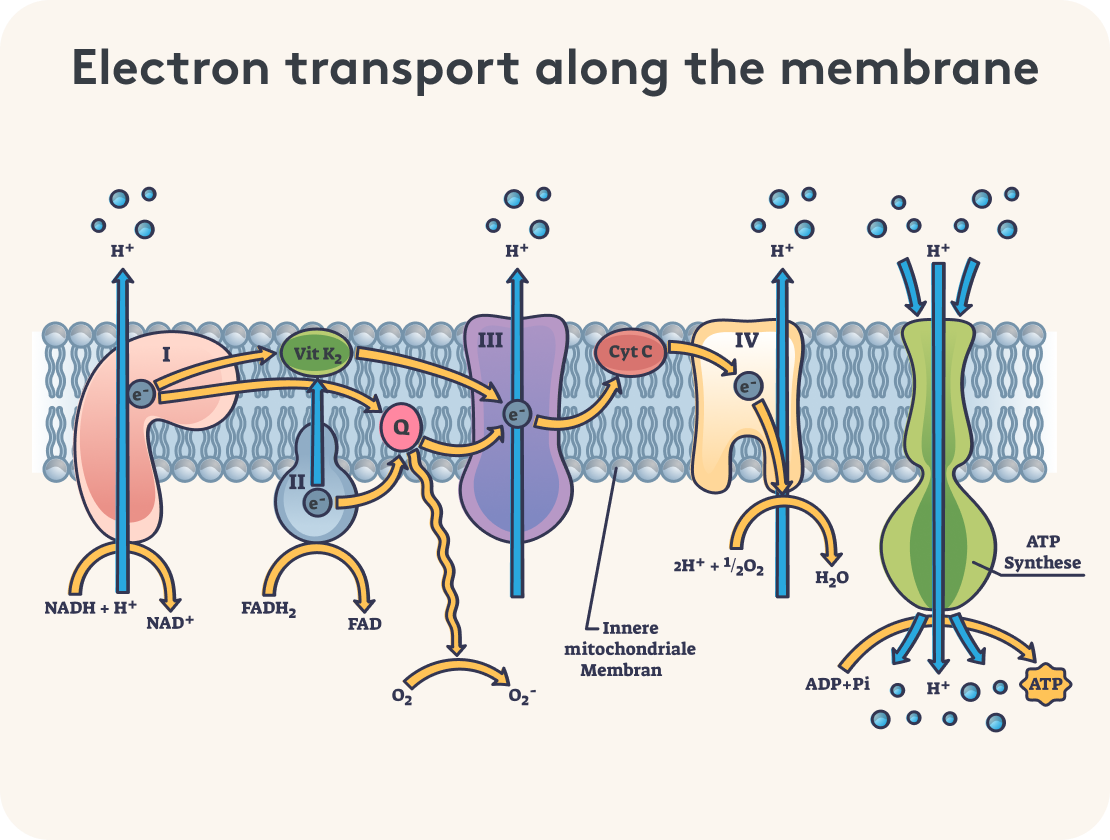

Q10 deficiency: How to fix it
There are several reasons why you may not have enough coenzyme Q10:
- A blockage of the production pathway due to medication: Treatment with statins, i.e. cholesterol-lowering drugs, can lead to a Q10 deficiency because the body's own synthesis pathway (a branch of cholesterol synthesis) is inhibited⁶
- You use up too much coenzyme Q10 and regenerate too little : Normally, coenzyme Q10 is not used up, but regenerated. If this does not happen (for example due to radical stress⁷, or a slow enzyme⁸), you have too much coenzyme Q10 consumption and the synthesis has difficulty keeping up
- You have an increased need that you have not yet met: This is the case, for example, with athletes or young people such as schoolchildren and students
- You have taken antibiotics over a long period of time: These drugs damage your mitochondria⁹ in the long term and thus your energy metabolism. The need for coenzyme Q10 is increased
There are numerous triggers for a coenzyme Q10 deficiency. And this deficiency becomes noticeable in the long term. Common symptoms include
- fatigue
- muscle weakness
- Rapid muscle strain
- concentration problems
In order to effectively combat a deficiency, it may be worth taking coenzyme Q10 as a dietary supplement. The substance can be supplemented, for example, with products in the form of Q10 capsules or as a liquid product.
Where else does coenzyme Q10 occur?
Coenzyme Q10 can also be supplied through diet. The coenzyme is found in some foods. Since Q10 is found in animals and humans, particularly in organs that have a high energy requirement and consumption, the following foods are particularly rich in coenzyme Q10:
- Oily fish
- Meat
- offal (heart and liver)
- nuts and seeds
PQQ & Coenzyme Q10: A Perfect Pair
If two things belong together, then they are PQQ and coenzyme Q10. There are two important reasons for this:
- Coenzyme Q10 is particularly important for the respiratory chain and energy production. If your body is increasingly struggling with radical stress, coenzyme Q10 can no longer be regenerated as quickly. In this case, a combination of both micronutrients makes sense: PQQ supports the regeneration process because it can regenerate coenzyme Q10 directly.
- On the other hand, coenzyme Q10 is also an important supplement to PQQ. This nutrient is an important antioxidant and can reduce oxidative stress. Thus, PQQ contributes to mitochondrial health. Coenzyme Q10 promotes energy production.
Taking PQQ and coenzyme Q10 together is therefore significantly more effective than taking coenzyme Q10 alone. Regardless of whether you take the two micronutrients in the form of dietary supplements or through food: In combination, the power couple can do quite a lot within your body, support your mitochondria and improve your performance.
This article is based on carefully researched sources:
Sources & Bibliography
- deutsche-apotheker-zeitung.de/daz-az/2003/daz-19-2003/uid-9706
- Harris, CB, Chowanadisai, W., Mishchuk, DO, Satre, MA, Slupsky, CM, & Rucker, RB (2013). Dietary pyrroloquinoline quinone (PQQ) alters indicators of inflammation and mitochondrial-related metabolism in human subjects. The Journal of nutritional biochemistry, 24(12), 2076-2084.
- Singh, A.K., Pandey, SK, Saha, G., & Gattupalli, N.K. (2015). Pyrroloquinoline quinone (PQQ) producing Escherichia coli Nissle 1917 (EcN) alleviates age associated oxidative stress and hyperlipidemia, and improves mitochondrial function in aging rats. Experimental gerontology, 66, 1–9.
- Jonscher, KR, Chowanadisai, W., & Rucker, RB (2021). Pyrroloquinoline-Quinone Is More Than an Antioxidant: A Vitamin-like Accessory Factor Important in Health and Disease Prevention. Biomolecules, 11(10), 1441. https://doi.org/10.3390/biom11101441
- Kumazawa, T., Sato, K., Seno, H., Ishii, A., & Suzuki, O. (1995). Levels of pyrroloquinoline quinone in various foods. The Biochemical journal, 307 (Pt 2)(Pt 2), 331–333.
- Potgieter, M., Pretorius, E., & Pepper, MS (2013). Primary and secondary coenzyme Q10 deficiency: the role of therapeutic supplementation. Nutrition reviews, 71(3), 180-188.
- Garrido-Maraver, J., Cordero, MD, Oropesa-Avila, M., Vega, AF, de la Mata, M., Pavon, AD, Alcocer-Gomez, E., Calero, CP, Paz, MV, Alanis, M., de Lavera, I., Cotan, D., & Sanchez-Alcazar, JA (2014). Clinical applications of coenzyme Q10. Frontiers in bioscience (Landmark edition), 19(4), 619–633.
- Fischer, A., Schmelzer, C., Rimbach, G., Niklowitz, P., Menke, T., & Döring, F. (2011). Association between genetic variants in the Coenzyme Q10 metabolism and Coenzyme Q10 status in humans. BMC research notes, 4, 245.
- Singh, R., Sripada, L., & Singh, R. (2014). Side effects of antibiotics during bacterial infection: mitochondria, the main target in host cell. Mitochondrion, 16, 50-54.
